Coronavirus: Can the UK do 100,000 tests a day?
- Published
- comments
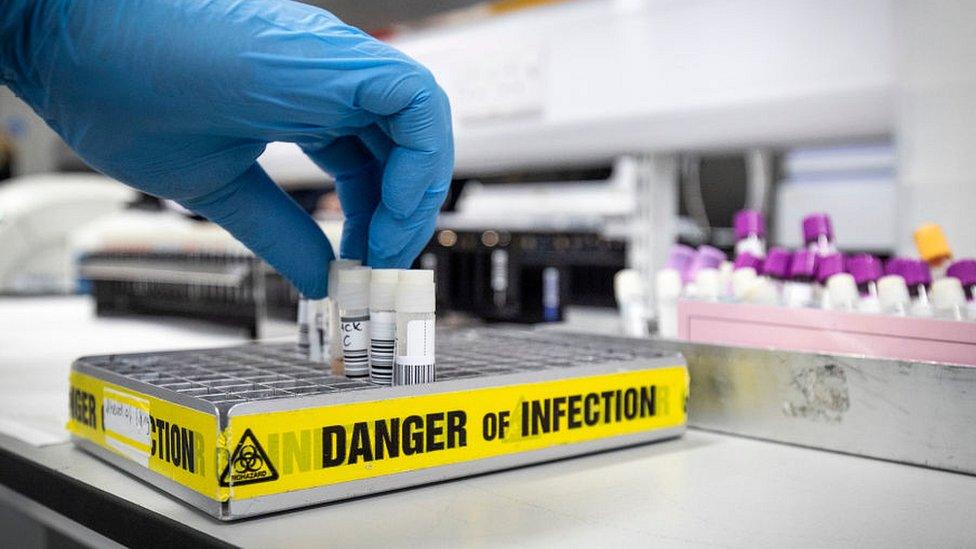
The UK government has promised it will dramatically increase coronavirus testing to 100,000 a day by the end of the month.
It has been criticised for not testing more people already, as countries like Germany have managed to reach 50,000 tests a day.
Daily coronavirus testing passed 10,000 people a day across the UK on Thursday 2 April - so how can capacity be increased tenfold in just four weeks?
What's stopping the UK testing more people?
There are lots of different pieces to the puzzle when it comes to making large-scale testing work.
You need the laboratory space as well as enough, and the right kind of, machines.
You need the right reagents - highly specific substances used to extract the virus's genetic material and to make it easier to study.
You need staff to take the swabs from patients' noses or throats, and staff in labs to process the tests.
And you need the logistics in place to get samples from patients to labs.
We're talking about diagnostic tests to find out if you have the virus here - ones that involve a nose or throat swab that has to be sent off to a lab.
Antibody tests use blood to look for evidence you've already had the virus - but these are unlikely to be available on a large enough scale in time to be part of the 100,000 target.
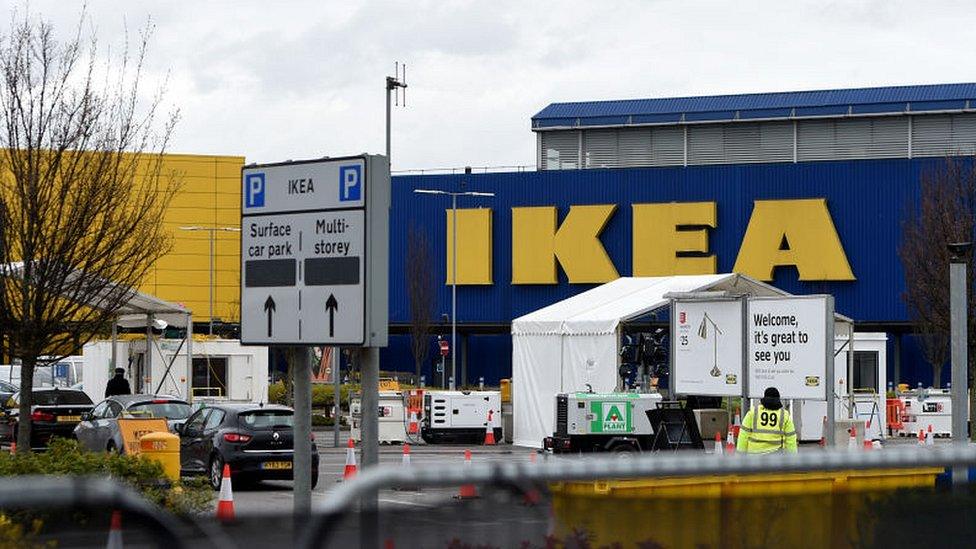
A drive-through testing centre for NHS staff has been set up in the car park of a branch of Ikea
Are these problems being addressed?
At first, only a small number of public health laboratories were being used to do coronavirus tests.
In the past fortnight, this was extended to a further 40 NHS labs around the UK.
Now the government is saying it will start to use the lab capacity of private companies to carry out coronavirus tests.
The UK has a large pharmaceutical and biomedical industry whose capacity could "easily" allow the country to do many more tests than it is now, according to Dr Rupert Beale, who has been involved in developing a diagnostic test for coronavirus at the Francis Crick Institute, which will be made available to NHS staff in the area. But so far, this industry hasn't been tapped into, he said.
As well as labs, Health Secretary Matt Hancock said the government would now call on UK-based "pharmaceutical giants" GlaxoSmithKline and AstraZeneca to make the reagents necessary to carry out the tests.
The UK has faced problems getting hold of the relevant reagents, which have been in high global demand.
This has been a global problem, but some countries were in a better position than others.
Could the UK have increased testing sooner?
The decision was made to centralise the UK's testing effort to a small number of public health labs, and this position only began to shift in the last couple of weeks.
Part of being able to scale up means "being willing to cede a little control over where, how and by whom the tests are conducted in order to increase capacity and decrease turnaround times", according to Prof Eleanor Riley, an immunologist at the University of Edinburgh.
The two countries seen as the biggest testing success stories, Germany and South Korea, made many more labs available from an earlier stage - three times as many in Germany and two-thirds more in South Korea when adjusted for population size.
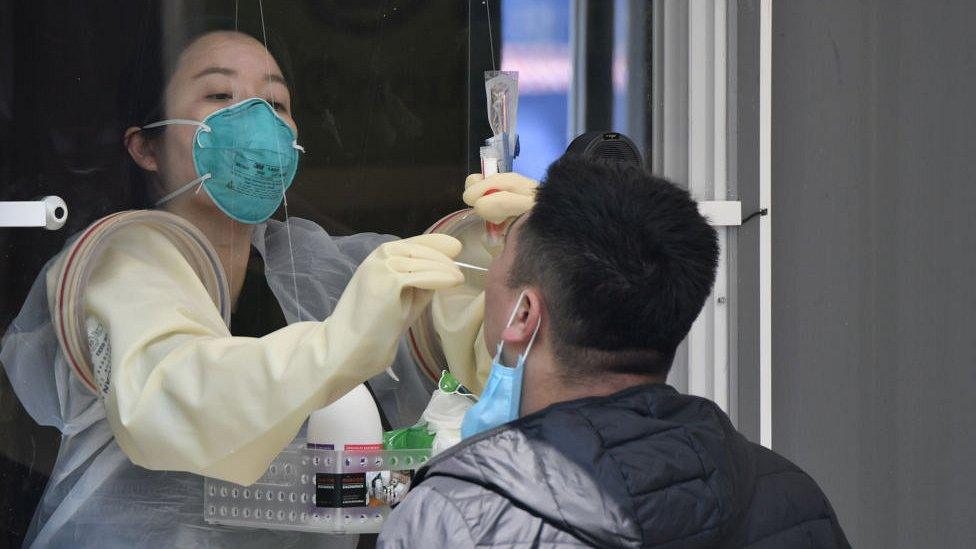
In South Korea, walk-in testing centres were quickly set up
There has also been a question of the availability of testing kits, including the reagents needed to study the virus once on a swab.
While some components have been in short supply worldwide, South Korea acted faster than the UK in developing a test, and was able to stockpile materials.
Germany benefited from home-grown diagnostics and manufacturing companies which gave it first access to raw materials and new technology.
Some of the disparities now are down to structural differences in countries' testing capacity that pre-date the pandemic, according to Prof John Newton at Public Health England, who will oversee the government's testing plan.
Massive virology labs were set up in South Korea in the wake of the 2003 Sars outbreak, he said, while Germany was already a large global testing base.
How have the government's promises evolved?
At first, 10,000 tests were promised by the end of March, rising to 25,000 by the end of April.
Now the government has quadrupled its pledge to 100,000.
It didn't quite meet its first pledge, breaking the 10,000 mark two days late on 2 April.
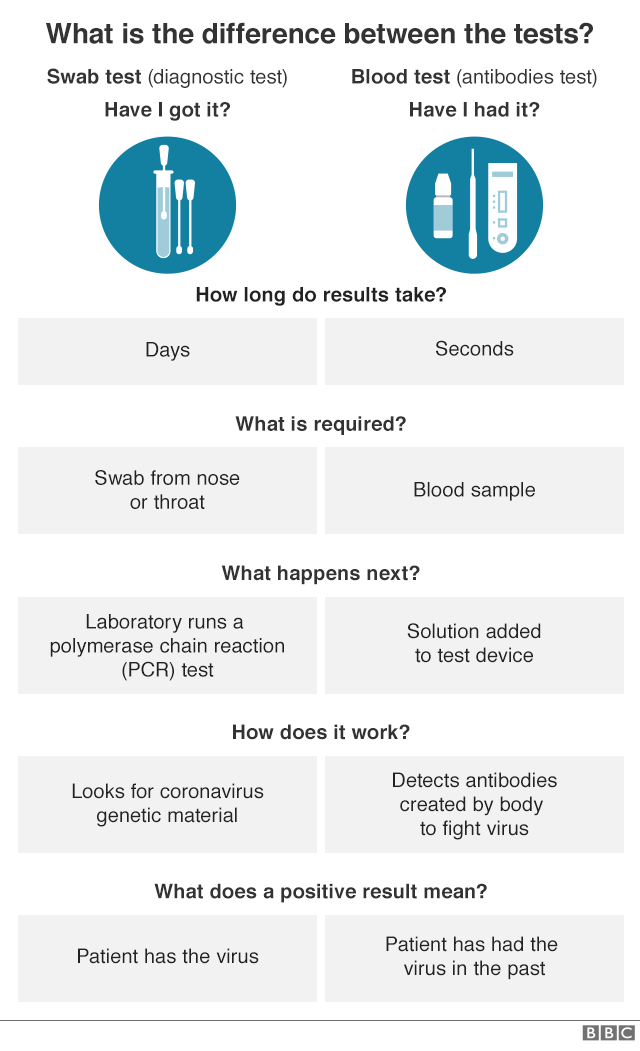

A SIMPLE GUIDE: How do I protect myself?
AVOIDING CONTACT: How to self-isolate and exercise
LOOK-UP TOOL: Check cases in your area
MAPS AND CHARTS: Visual guide to the outbreak

On Monday 30 March, as its deadline approached, Public Health England tweeted that it had reached the capacity to do 10,000 tests - although that number hadn't yet been carried out.
And the Department of Health and Social Care (DHSC) began to talk about the number of tests as opposed to the number of people tested - higher since some people need more than one swab to check their results.
Previously it had only published figures referring to the (lower) number of people tested.
A DHSC spokesperson said the 100,000 promise referred to tests, not people.
Follow Rachel on Twitter, external
- Published3 April 2020
- Published8 April 2020
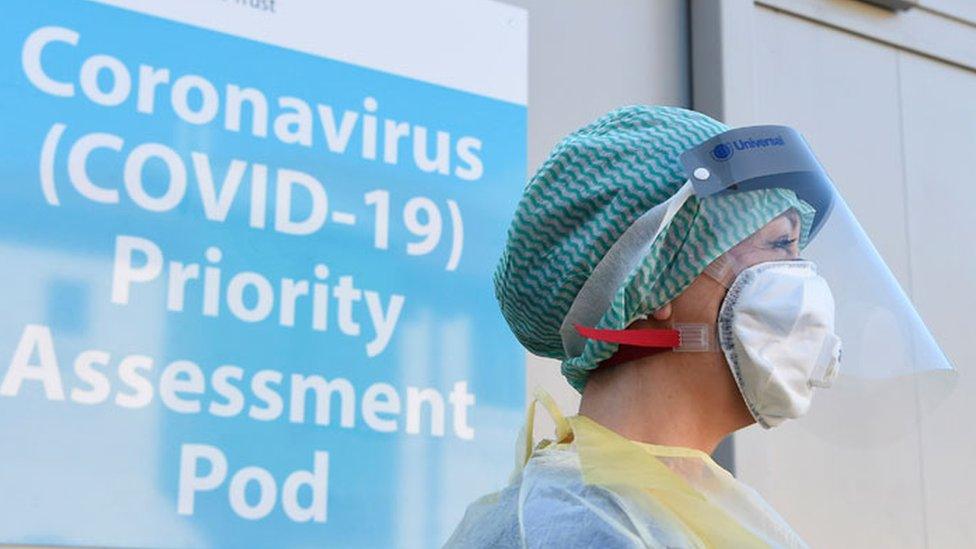
- Published3 May 2022
